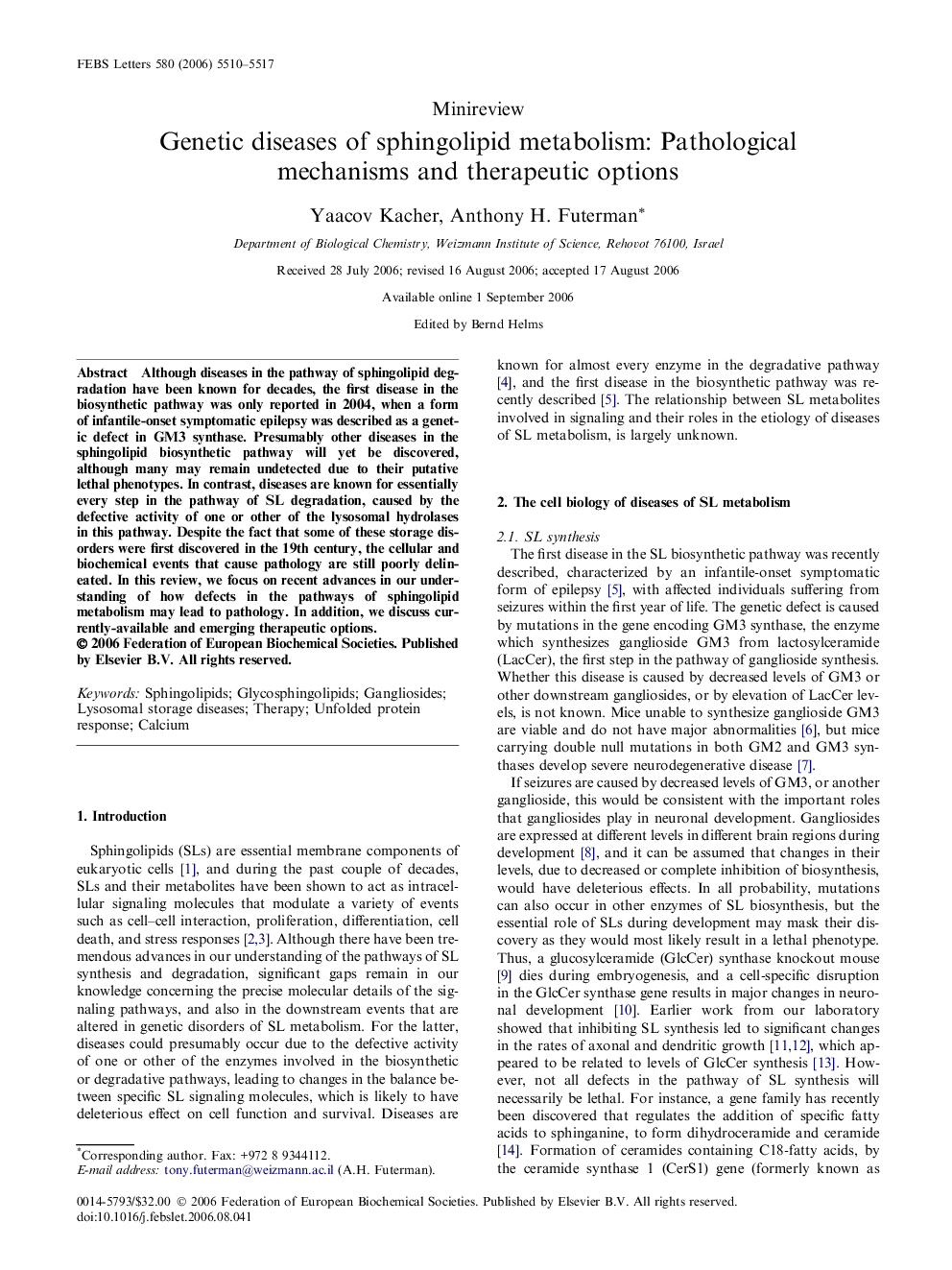| Article ID | Journal | Published Year | Pages | File Type |
|---|---|---|---|---|
| 2050412 | FEBS Letters | 2006 | 8 Pages |
Although diseases in the pathway of sphingolipid degradation have been known for decades, the first disease in the biosynthetic pathway was only reported in 2004, when a form of infantile-onset symptomatic epilepsy was described as a genetic defect in GM3 synthase. Presumably other diseases in the sphingolipid biosynthetic pathway will yet be discovered, although many may remain undetected due to their putative lethal phenotypes. In contrast, diseases are known for essentially every step in the pathway of SL degradation, caused by the defective activity of one or other of the lysosomal hydrolases in this pathway. Despite the fact that some of these storage disorders were first discovered in the 19th century, the cellular and biochemical events that cause pathology are still poorly delineated. In this review, we focus on recent advances in our understanding of how defects in the pathways of sphingolipid metabolism may lead to pathology. In addition, we discuss currently-available and emerging therapeutic options.
